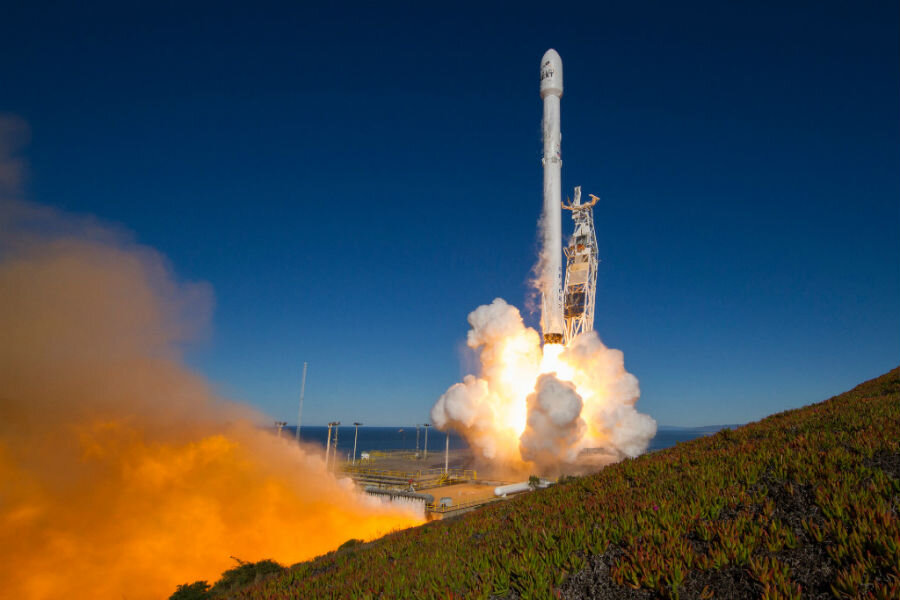SpaceX launches, lands rocket after four-month hiatus
Loading...
Four months after one of its rockets exploded on the launchpad, SpaceX finally conducted a successful launch on Saturday.
The Falcon 9 rocket carried a payload of 10 satellites into orbit for the communications company Iridium. Shortly after the launch, the first stage landed back on Earth for later re-use, in a successful completion of the mission's secondary goal.
The return to flight has been a relatively fast one for SpaceX, but the stakes were high in the lead-up to the launch – even higher than the cost of the $3-billion satellite constellation the company is sending into orbit for Iridium. A picture-perfect launch was needed to help alleviate safety concerns that have beset the company since their last rocket exploded, especially since SpaceX is expected to send astronauts into space for NASA next year.
On September 1, 2016, an explosion during the fueling of a similar rocket to the one launched Saturday grounded all flights from the company while investigators sought to figure out why the rocket exploded and how to prevent such failures. It was eventually discovered that a helium tank had ruptured from the extreme cold from liquid oxygen during a standard fueling procedure, which led to the near-instantaneous destruction of both the rocket and the $200-million Amos-6 communications satellite on board.
While the destruction on the launch pad alone would have been sufficient to ground flights for a while, the accident also raised worries at NASA over SpaceX's odd fueling procedures, as was reported by The Christian Science Monitor:
SpaceX employs a different fueling strategy than other companies: It uses chilled liquid oxygen in order to be able to fit more fuel in the tank and lift more weight into orbit, an innovative step that has allowed SpaceX to break new ground in cargo carriage. But because of this special fueling method, its spacecraft must be fueled immediately before launch so that the fuel does not warm up, which means that in the future, astronauts will likely be aboard prior to fueling.
Spaceflight officials have raised concerns about fueling conditions for some time. In December 2015, International Space Station advisory committee Chairman Lt. Gen. Thomas Stafford told NASA in a letter that fueling a rocket with crew aboard flies in the face of decades of launch policies.
Many of SpaceX's unorthodox innovations have driven down costs, making the company a favorite among its clients. With the cheap price tag of $60 million per booster, a Falcon 9 is about half the cost of competitor's rockets, according to CBS. But to stay in business, the company will need to prove that its rockets are both safe and affordable with a series of successful launches.
At 9:54 AM local time on Saturday morning, one of SpaceX's Falcon 9 rockets lifted off from Vandenberg Air Force Base in California. About nine minutes later, the first stage returned to Earth, touching down on a remotely controlled barge named "Just Read the Instructions." Meanwhile, the rest of the rocket proceeded into orbit, releasing 10 Iridium NEXT satellites that will form the foundation of a new 72-satellite network for the company.
But is SpaceX ready to complete Iridium's order in the coming months?
"It typically takes 9 to 12 months for people to return to flight," Tory Bruno, chief executive of United Launch Alliance, told Reuters a week after the September explosion. "That's what the history is."
In June 2015, another SpaceX rocket broke apart after launch, grounding flights for six months. But Saturday's launch shaved two months off of that time in a remarkably fast turnaround. Still, the company says they have taken extra measures to ensure the safety of upcoming launches, including modified pre-launch procedures that keep helium tanks warmer during the fueling process to prevent another catastrophic rupture.
The new refueling method reportedly went off without a hitch on Saturday.
This article contains material from the Associated Press.






